In the Spotlight
/Christopher Rainham
New Collection
Q & A
HCA: How did you get into art?
CR: Can’t remember not drawing! Lots of waste paper and felt pens and stuff around to use at home. Creative stuff from school was making pipe cleaner people and plasticine.
I grew up with three brothers, two older and one younger. It was good to have something that you were good at. I was good at drawing. When I was at junior school if I was asked what I wanted to be when I was older I said I wanted to go to art college, not specifically be an artist or make art. Not sure where that came from. No one in my family had been to university. I had an encouraging teacher when I did A level art who suggested I went to a life class on a Wednesday evening in Rochester. We also had a sixth form art room which we could use at any time which was excellent. It became the computer room when I left.
My grannies both encouraged me to paint and draw and wanted to see what work I had made. My maternal grandma had been to art school for a couple of years before marrying and my paternal grandma painted pictures of the flowers she grew and would give me bits of board and old tubes of oil paint.
My Dad had got a complete collection of books about ‘great’ artists that I liked to look at, people like Velasquez, Goya and Picasso. I was aware of them from quite an early age.
I sent drawings to Vision On and Blue Peter and once got a competition winners badge from Blue Peter that I wore continually until it ended up in the wash!
HCA: How do you start each piece?
CR: Everything starts with drawing. Sometimes I think I am not a painter but someone who colours in drawings.
I use a sketchbook to try out ideas and write things and make general drawings but I don’t make preparatory studies that turn into paintings. I make drawings of the birds I want to work with and then use tracings to create a composition directly onto the board or canvas. I often draw around pieces of twig or branch to create trees. I then wash over this drawing with a mix of earth colours like burnt sienna and yellow ochre and maybe a bit of cerulean blue and Payne’s grey. I paint the wash all over the drawing, making sure everything has some colour on it. I might make the sky a bit more burnt sienna than the rest of the background and use more yellow ochre in the foreground.
Then I begin to paint in the colours that I want things to be. Usually starting with the objects and the sky. Once this is worked up to almost complete I sometimes paint over it again with washes to ‘knock it back’ again. Then I repeat the process of filling in with the ‘proper’ colours. This technique helps to unify the image and allows me to play around with the edges of things, pushing and pulling the space in the picture to emphasise what I think is important within the composition.
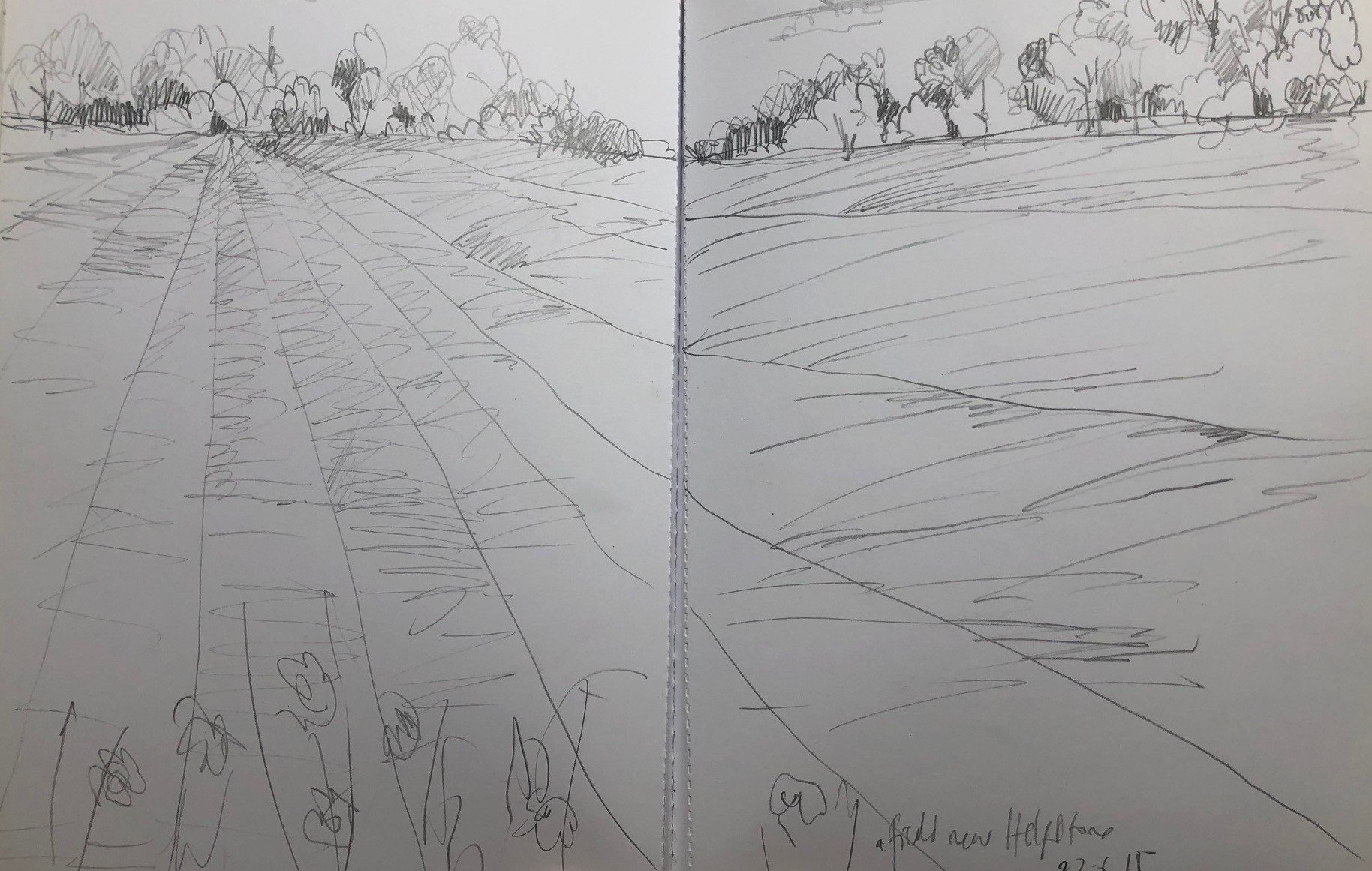
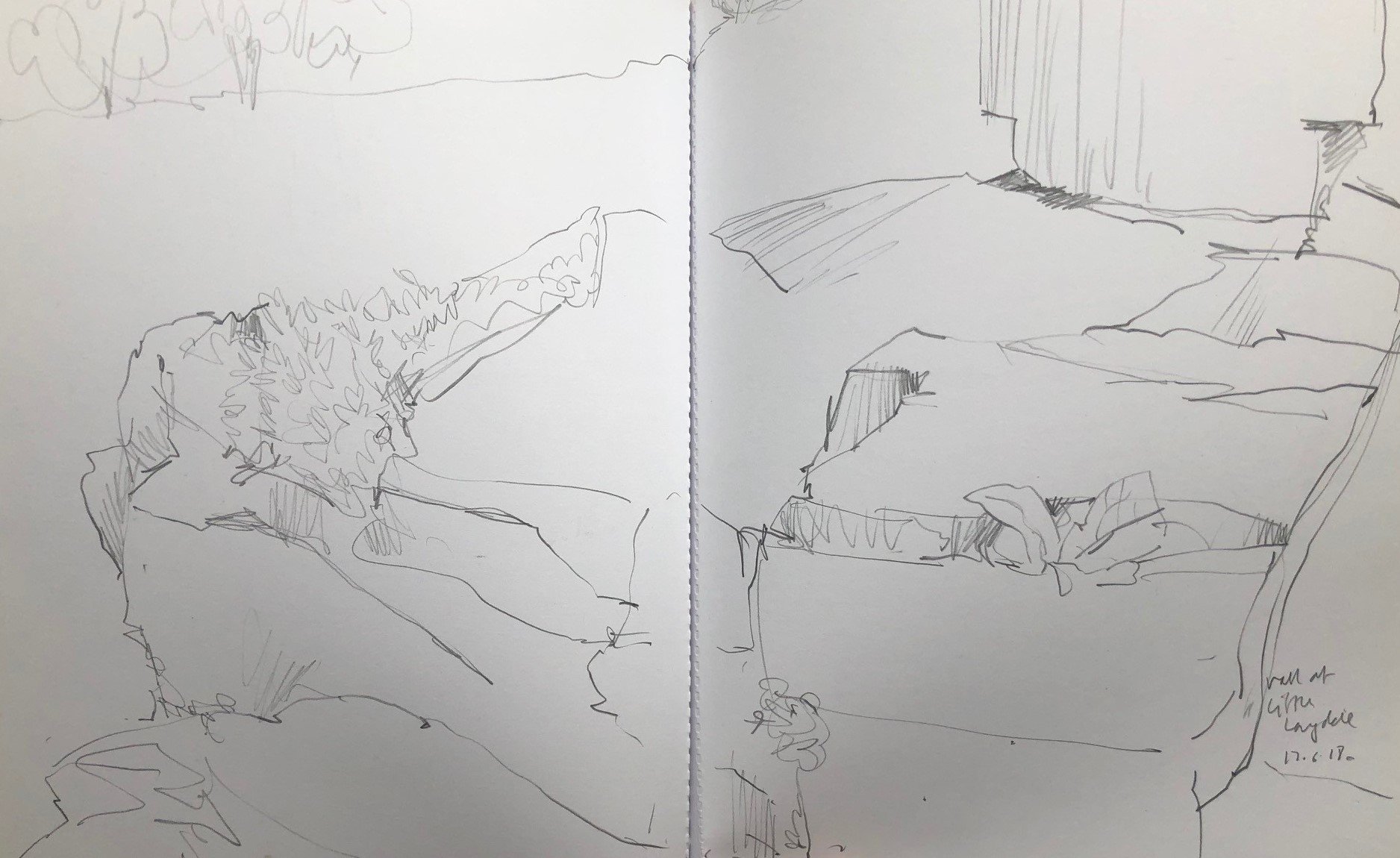
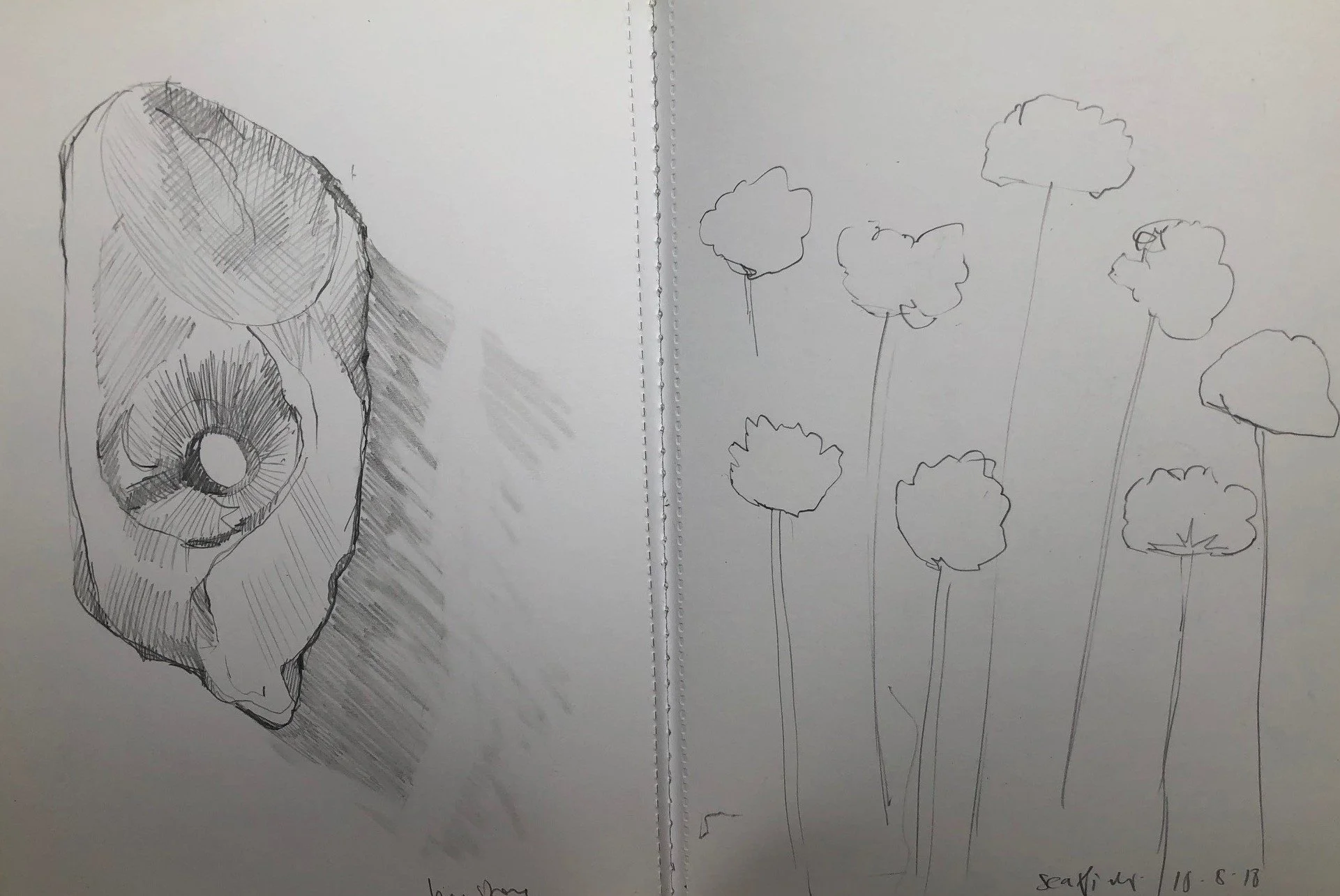
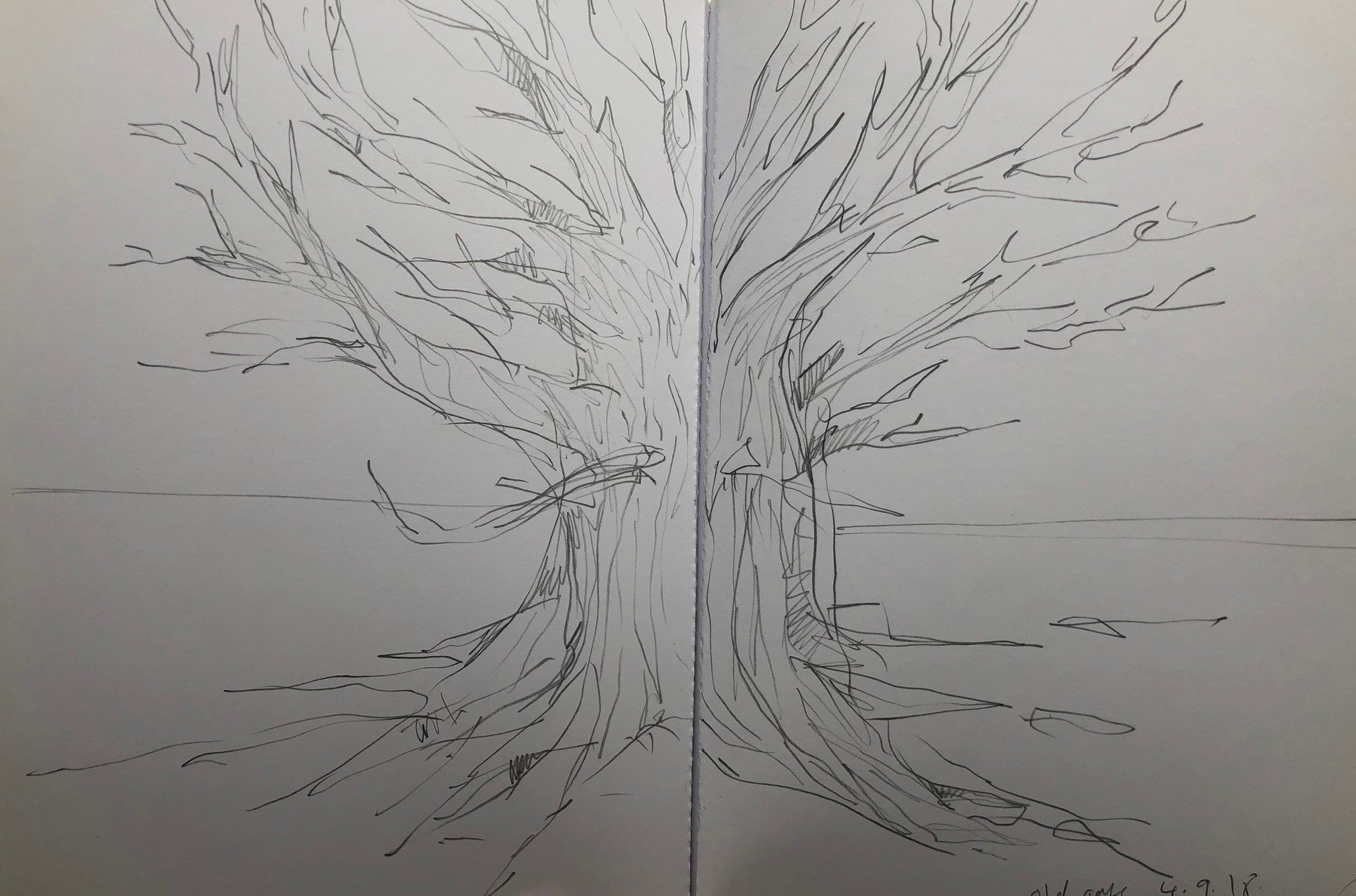
HCA: Do you have an idea of the image before you begin?
CR: Sometimes I do. I had an idea to paint a memory of seeing a Kingfisher on the canal here in Hebden Bridge and I imagined the finished painting with the bridge, the canal and a tree and then the Kingfisher repeated all over the surface of the painting like wall paper. I’ve started it and it has changed quite a bit already but it has still got the basic idea that came fully formed.
More often I have a general theme or combination of animals or a line of a poem or song that has sparked an idea in me and it is through the making that the image emerges.
Paintings can be like diary entries with a collection of birds and animals seen on a particular walk or day.
HCA: What materials do you use and why?
CR: I paint with acrylic paint. I use a range of wooden boards and canvases. I draw using pencil and conte pencil. I started using acrylic when my children were small as my studio space was near to the sitting room and I didn’t want to use turpentine in their environment.
I have recently started using oils again in a limited way.
I like the hard surface of the boards to draw on. I enjoy the way you can use conte to draw and then wash over. I find the immediacy of the acrylic and the fact you can easily over paint things suits my working methods. If everything goes wrong you can over paint sand down and start afresh.
Studio shot: materials
HCA: Where do you get your inspiration from?
CR: My garden. All the birds, butterflies and plants are just outside the studio window. An endless supply of inspiration in colour, weather, light and season.
Also in song, poetry, stories, the things that I read. A lyric of a song might run around my head suggesting a response or a starting point for a painting. Something like the Christina Rossetti line from a poem ‘where the soft mosses grow’ or the lyric from the This Mortal Coil song Another Day ‘where the winds own forget-me-nots blow’ The words occasionally are written onto the paintings or used as titles.
HCA: What is your studio like?
CR: I have a room on the ground floor of my house. A large zinc topped table, an H frame easel, cupboards and shelving and plenty of wall space for hanging work in progress. I have only been here since December so it’s not quite how I want it but I’m getting there. There has been lots of work to do on the house and tools and materials tend to end up in the studio and things that are on their way to being stored somewhere or thrown away. I have promised to try and keep it tidy but it is a challenge when you want everything close to hand.
HCA: Are there artists that inspire you?
CR: Lots of artists inspire me, usually the ones that make things I wish I could make. Anselm Kiefer and Hughie O’Donoghue have been a constant inspiration, although my paintings are much more domestic in scale I think there are some elements of landscape and narrative that come through.
I am more recently inspired by David Hockney after seeing the show of his early work at the Hepworth and then following what he is doing capturing nature in North Yorkshire and then France.
HCA: What are you trying to achieve in your pieces?
CR: I think I am trying to communicate my experience of the natural world. The serendipitous moments of connection to the flora and fauna on my doorstep. Maybe the more mundane corners of the natural world, a sparrow, a weed or a path through a wood. Within that there might be a reference to poems or songs that inspire me or to ideas about ecology and the environment.
HCA: How do you know when a piece is finished and it is time to stop?
CR: I find this exceptionally hard. I love starting work, the blank canvas never makes me nervous but I have a terrible tendency to overwork things. I suppose that is a consequence of not knowing how I want something to look before I start painting. At heart you have to admit to yourself that some things don’t work and need to be abandoned. I like reworking old paintings to create something completely new so work put aside is never wasted.
HCA: Are there any other art forms you would like to try?
CR: One of the best parts of a formal art education is the opportunity to try all sorts of creative activity.
I am happiest in two dimensions, I like the fact that paintings and drawings can constantly adapt and change. I enjoyed printmaking when I was at college, particularly etching, but it is very hard to sustain a printing practice without access to a print studio or lots of expensive equipment. I have a ‘Gelli’ print plate that I am looking forward to trying out.
HCA: What are you currently working on?
CR: From 2019 to 2020 I was on a talent development programme for artists in Greater Manchester who were over fifty. Ten artists were brought together from the 10 Greater Manchester authorities for coaching, mentoring and an exhibition at the Castlefield Gallery in Manchester. The artists that I worked with have stayed together as a group and continued to exhibit. We have an exhibition at the Salford Gallery and Museum in December and I am currently making work for this. We are responding to the collection held by the museum and showing our working process. I will be looking at the museum’s collection of neolithic flints and stones and creating a series of paintings and drawings looking at what the local area may have been like before the city developed.
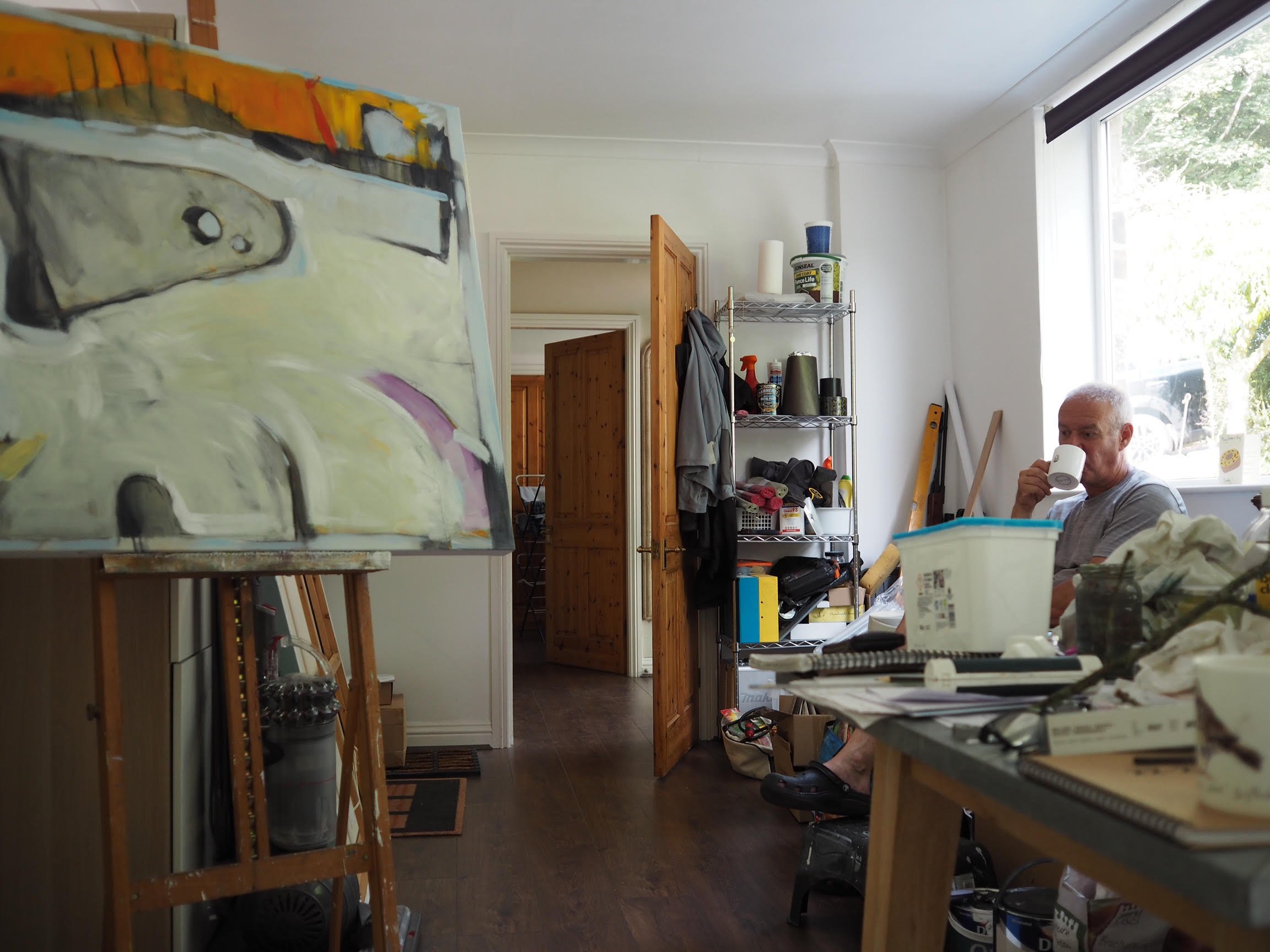
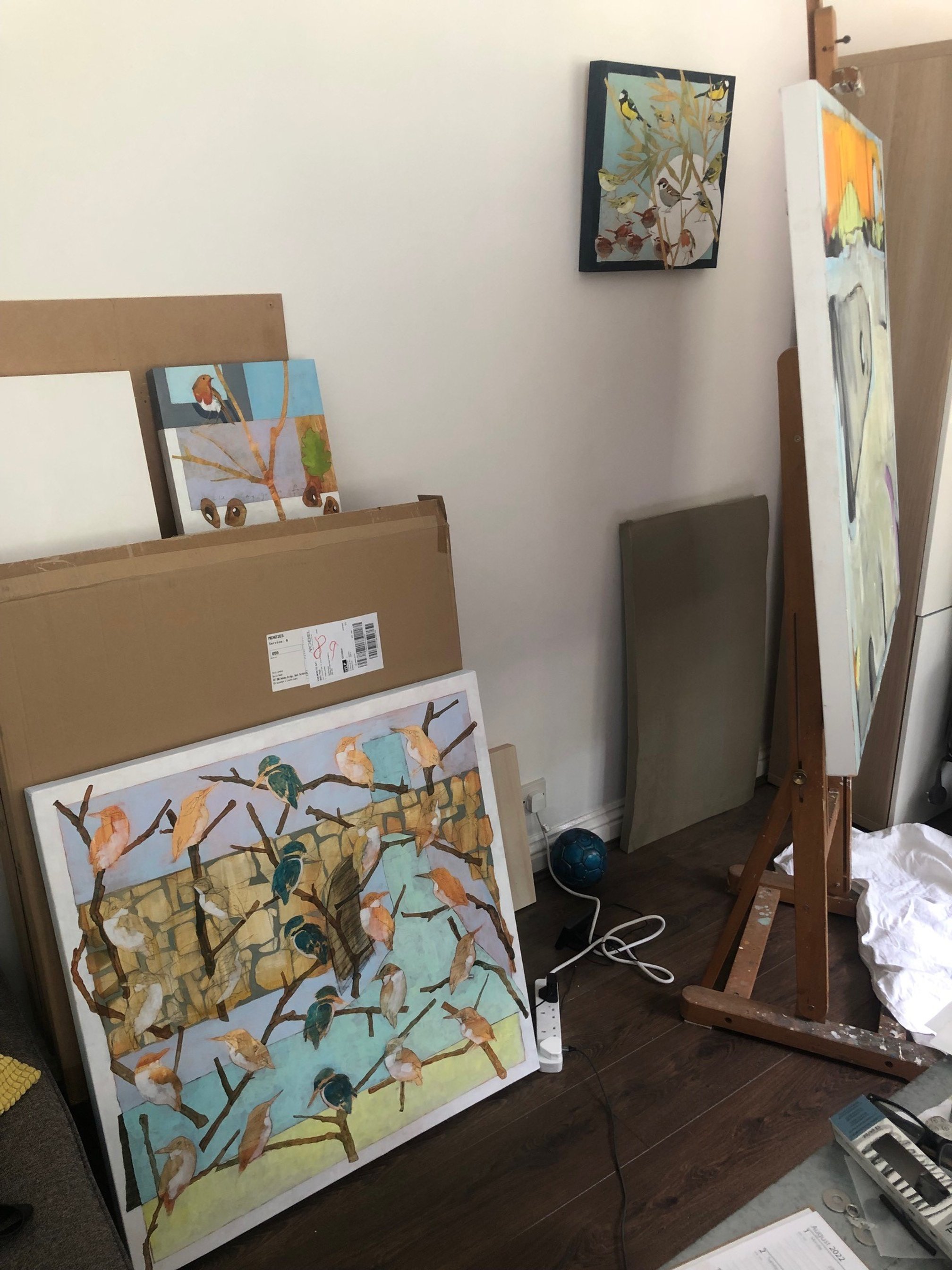
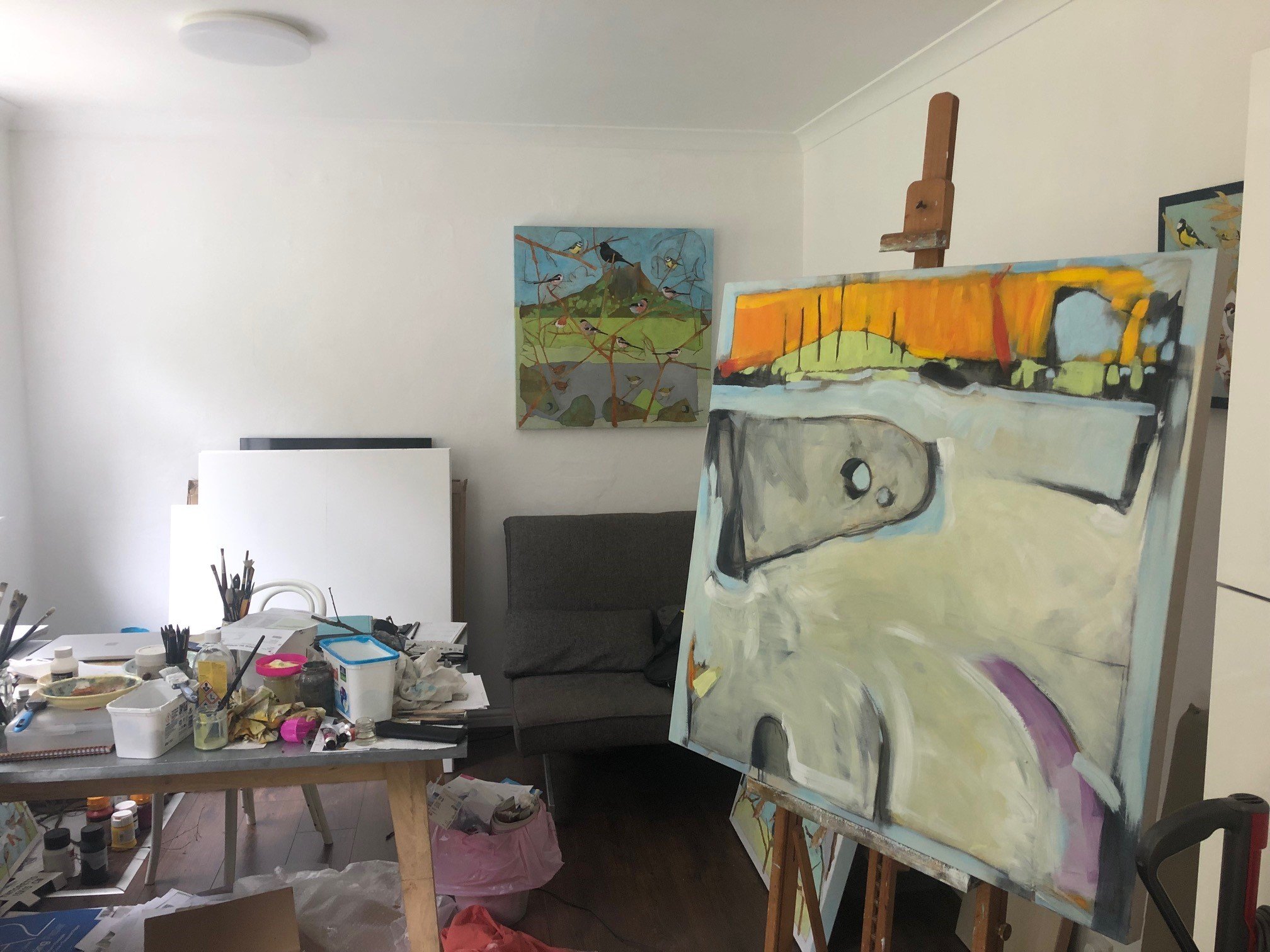
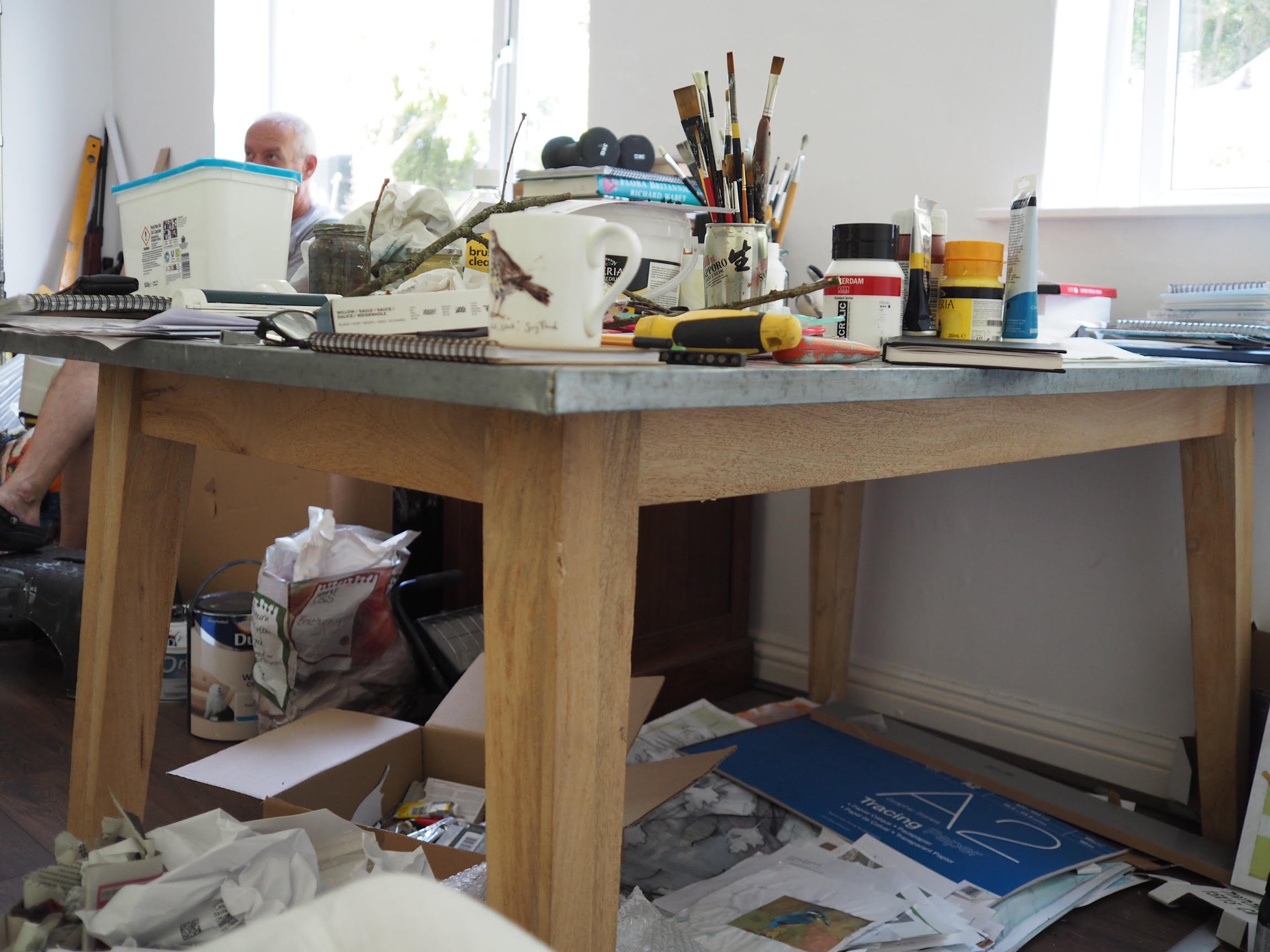
-
Christopher Rainham’s work has always been inspired by the natural world and more specifically his experience of the natural world. He is inspired by the way flora and fauna is woven into language, the explanations of things, stories and beliefs.Rainham loves the material qualities of paint, what it does, how it feels, smells, how in painting and drawing materials change and adapt, try and become something else in becoming a painting.
-
Animals and flowers and birds have their own symbolism, are the characters in myths, some of the players in religious writings, metaphors for things we can’t explain. The birds in my paintings are the motif of my design, the objects of my composition and an element of my pattern. I’m interested in the way society interacts with the wild and not so wild things around it, the affect we have on the environment and the living things that rely on it to survive.My responses may represent an image conjured by a text or a feeling found between the lines of the story or even disparate pieces of the story, my own knowledge and other beliefs all rolled into one. All my work starts with drawing, usually directly onto a primed canvas or board. I make stencils of elements to be repeated or use a digital projector to play with scale. Then I begin to cover the whole surface with a range of earth colours, brown, ochre, blue or grey. I can then start to develop each element trying to create the colours I want. Often the painting needs to be ‘knocked back’ by having a wash of colour applied over the existing image. I then begin to develop the picture again. This allows me to play with the depth in the image and also the edges of objects in the picture plane, light and shade and modelling. I find starting a painting or drawing exhilarating, full of promise and possibilities. I have never been daunted by the fear of the white sheet of paper or blank canvas. I have sometimes thought about offering my services to other artists as ‘Picture Starter’. I think that’s why I have enjoyed my work in education, the opportunity to spark ideas in someone else’s mind. Many more ideas for paintings come and go and are left somewhere between the supermarket car park and the studio door than ever find their way to gallery, fair or house.The exchange of thought through my painting is what inspires me to communicate, how it ends, how a picture becomes ‘finished’, that is the hard bit.I wonder if anyone offers that as a service to creatives? ‘Picture Finisher’



acrylic on wood block
15 x 15cm